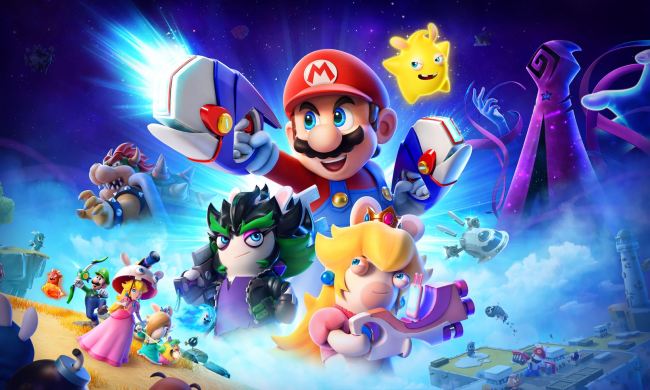Persona 5 Strikers needs to do one of two things. It either needs to appeal to newcomers of the Persona franchise that have been turned off by the tedious nature of the mainline entry, or it needs to serve as a worthy sequel to die-hard fans of Persona 5 who will revere it just as much. In a perfect world, it obtains a balance of both ideas.
After playing the opening hours of the game, I’ve found that Strikers retains a lot of the style of Persona 5, but lacks the main hooks that made the initial game so compelling to its audience. On top of that, it feels extremely long in the tooth so far. Even though the first dungeon of the game moves at a faster clip than the opening of Persona 5, it is nevertheless a dialogue- and tutorial-heavy introduction.
This is still a game aimed at Persona fans
Persona 5 was the first Persona game that I ever attempted to play. While I fell in love with its style and music, its laborious pacing prevented me from getting hooked. I’m not the only one. In talking with friends and peers that are fans of the series, it seems that unless Persona 5 completely draws you in and becomes an obsession — the only game you want to play — then it’s not for you. It’s incredible that some people, after finishing Persona 5 with 150-plus hours logged, immediately want to jump in again. That’s an incredibly powerful feeling to inspire in someone.

Persona 5 Strikers is going to be a significantly shorter experience than Persona 5. According to a representative for the game, it should take the average player around 30 hours to complete. I was also told that the preview portion with the opening dungeon would take around two hours if mainlined, and up to five hours with extra elements. I tried to complete this initial dungeon as quickly as possible, and I blew past the two-hour mark, ending up closer to five.
Like Persona 5, the majority of my time spent in Persona 5 Strikers so far has been dominated by its dialogue. The Phantom Thieves, a ragtag group of high school and college students that attempt to purify the souls of society’s cruelest, are on summer vacation. The nameless protagonist, code-named Joker, has returned to Shibuya for the break to hang out with his friends.

While the dialogue the group shares is well-written, clearly defining their individual personality traits, it simply goes on and on and on. Just when you think they’ve discussed everything that needs to be talked about, someone else finds something to say. The conversations, as interesting as they are, feel like you’re cycling through an endless menu, which is exacerbated by the static shots that frame the encounters.
The way in which Persona 5 condenses its time is by switching out the turn-based mechanic of its predecessor for Musou gameplay, seen in games such as The Legend of Zelda: Age of Calamity, where players fight a horde of enemies in real time, dealing large and devastating attacks. The mechanic fits the theme of Persona, and really opens up when the game allows you to play as Phantom Thieves other than Joker.
It lacks what made Persona 5 great
While Musou grafts well to the style of Persona, it’s not nearly as compelling as the tactical turn-based gameplay in Persona 5, which is one of the few things that did keep me engaged when I played it. The turn-based system also provided more room for all the different gameplay elements to breath: Using items, dealing damage with Personas, choosing which character to attack with, etc. The frantic pace of the battles in Strikers makes for far less elegant gameplay.

The opening dungeon is much easier than what I’ve come to expect from Persona 5 , with frequent checkpoints that allow you to leave the dungeon, resupply, and return to exactly where you left off. While I felt like one wrong move could spelled doom in the first dungeon of Persona 5, the initial area in Strikers proved no such challenge. Hopefully, future dungeons increase the difficulty. The rest of the gameplay feels a bit watered down due to that lack of difficulty, making who you fight with and how you use them relatively unimportant, just as long as you’re in a constant state of attack.
Outside of combat, there’s certainly enough dialogue to please Persona fans, but the lack of the school framing and social structure makes the interactions all feel relatively empty. Joker was a character that evolved over time and made an impact on the characters around him in Persona 5 — a protagonist that propelled the story forward. So far, he’s nothing more than a fly on the wall in Strikers.
The game also extends the plot of Persona 5 rather than Persona 5 Royal, the rerelease of the game that added new stories and characters, and the title that most fans agree is better than the original. Players of Royal will likely be disappointed that the elements introduced in that game may has well never have existed in Strikers.

Persona 5 Strikers, even though it’s a smaller game than Persona 5, still feels like a big game compared to most. There’s a lot more to see and do, and I feel there’s a chance that the trepidation the initial dungeon made me feel will subside the more time I spend with it. I am compelled by its story, which smartly explains why the gameplay is different in the first place. Thanks to the intriguing plot, and the quality of dialogue, I expect die-hard Persona fans to still ultimately enjoy their time with it. I do not expect them, however, to become as enamored by it as they were with Persona 5.


